Development of a Risk Assessment Framework for the Caribbean Fishery Management Council
Leigh Kellett Fletcher
April 23, 2025



Leigh Kellett Fletcher
April 23, 2025



Preview Next Steps
Explain the Purpose of a Risk Assessment Framework (RAF)

Outline The Structure Of The Framework
Describe The Process Used to Develop The RAF
Describe Key Data Sources And Strategic Inputs

In NMFS EBFM Policy, risk is defined as the probability and potential impact of events or actions that could negatively affect the health, productivity, and resilience of marine ecosystems, their associated fisheries and the communities that rely on fishing for their livelihoods and sustenance.
For the Council, risk is the probability of not meeting management objectives related to all of these components.
The RAF has been designed to be a part of the Fishery Ecosystem Plan under development by the EBFMTAP.
Higher risk decreases the likelihood of predictable responses to management action unless steps are taken to mitigate risk.
The RAF helps Council identify the source of the risk and options for mitigating the identified risks.
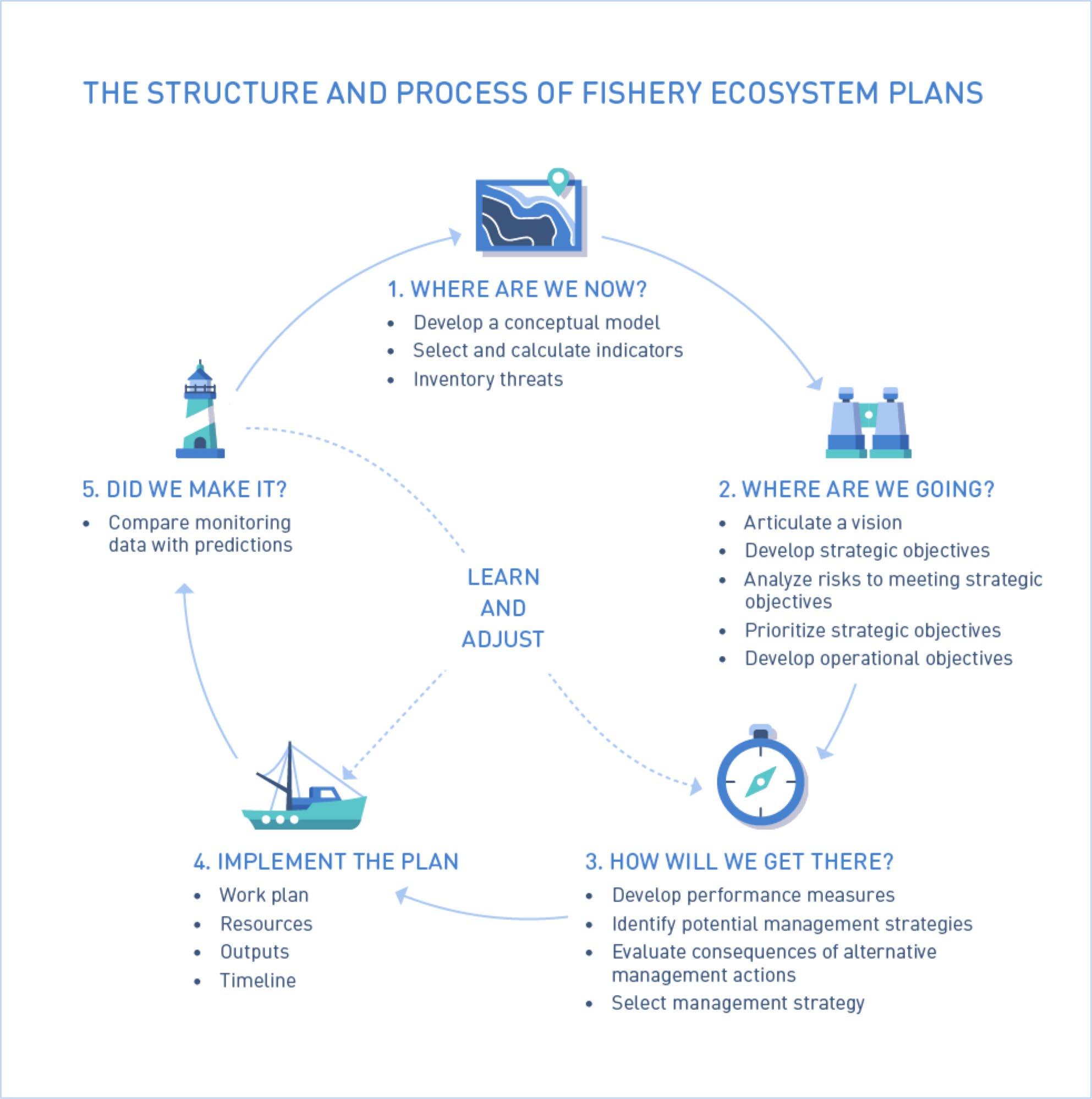
FEP loop (Levin et al. 2018).
Island Based FMPs and Strategic Plan Identified Management Goals and Objectives

Conceptual Model Identified Primary Ecosystem Threats To Achieving Management Goals And Objectives

Risk Categories And Indicators Identified To Monitor Impact Of Identified Threats

Qualitative Thresholds (Based On Change Over Time) Established To Measure Relative Risk From Ecosystem Threats
Category And Aggregate Risk Scores Calculated On Scorecard Using Data From ESR And Other Public Datasets

Annual Ecosystem Status Report and other datasets summarize available data and identify trends



Use SDM To Evaluate Risk Scores And Identify Management Alternatives In Decision Making Process

Risk Score Card Created To Apply Thresholds And Display Relative Risk Levels Across Indicators Select


Pathway (SDM or Ad Hoc)
Ad Hoc Consideration Of Risk Scores In Decision-making

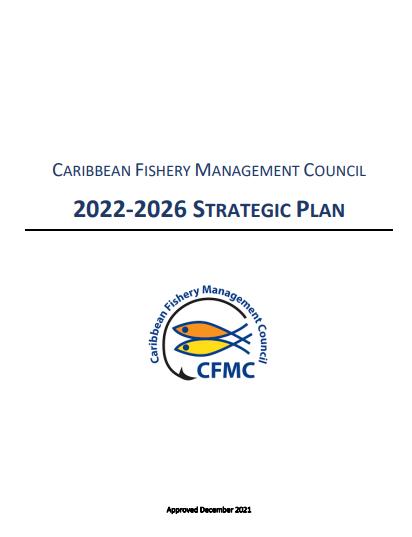
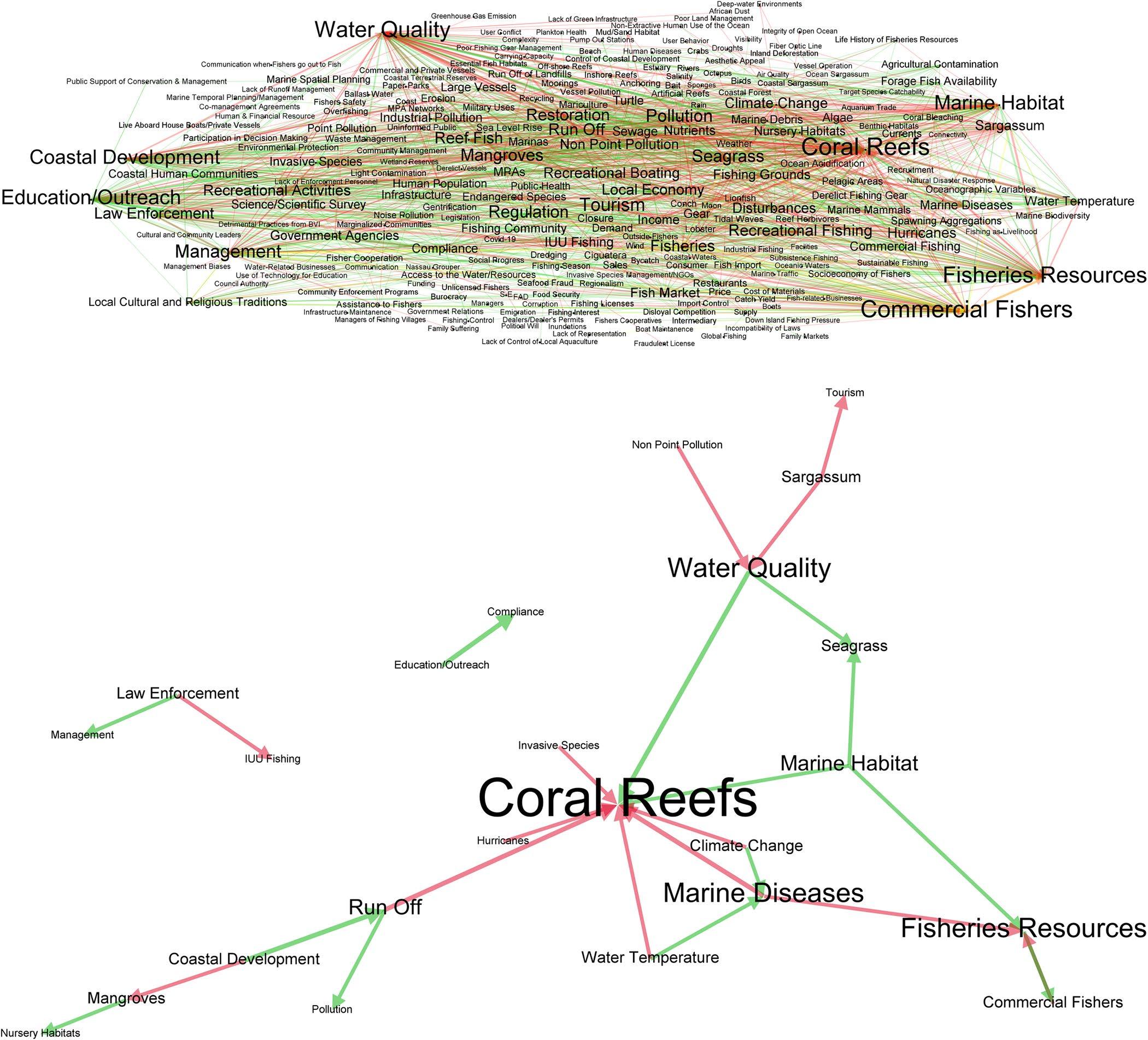
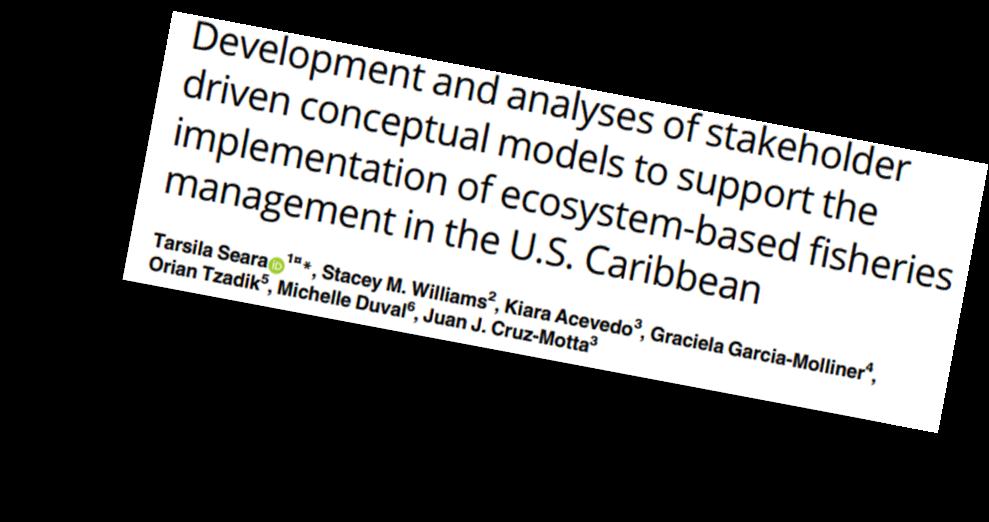
Top Threats Identified in Conceptual
Model Run off
Marine Diseases
Invasive Species
Water Temperature
Climate Change
Hurricanes
Coastal Development
Tourism
Disturbances
Nonpoint Pollution
Anchoring
Sargassum
Nutrients
Erosion
Port Pollution
Marine Debris
Fishing Pressure
Water Quality Related Run off; Port Pollution; Nonpoint Pollution; Coastal Development; Erosion; Nutrients
Ecosystem Level Related
Water Temperature
Climate Change
Community-Related
Disturbances
Hurricanes
Ocean Economy Related
Tourism
Port Pollution
Marine Debris
Anchoring
Ecosystem Level Function Indicators Distortive Pressure Sensitivity Indicators SocioEconomic Sensitivity Indicators
Coral
Ecosystem Sensitivity Indicators Aggregate Risk
+ Future Indicators (Data Gaps)
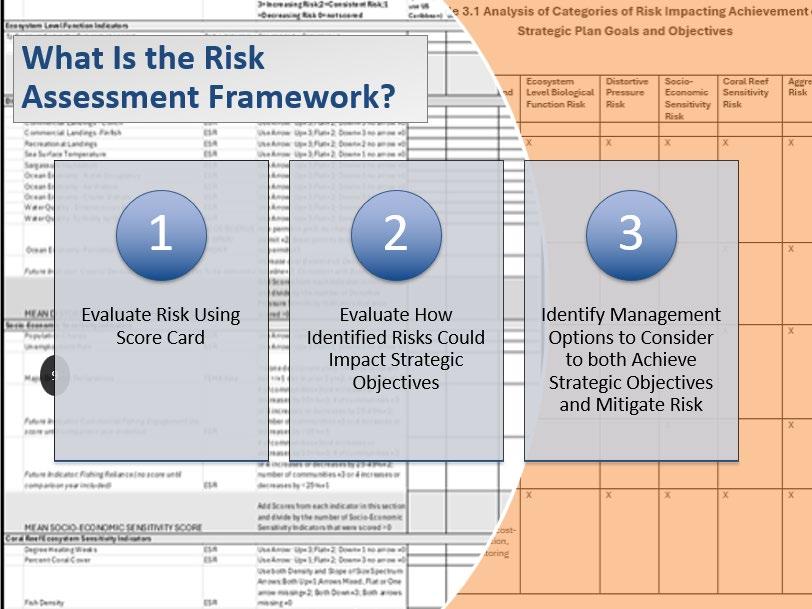

Chapter 1 The RAF Score Card and Instructions for Use
Chapter 2 Description of Indicators, Data Sources and Scoring Criteria
Chapter 3 Using Risk Scores as a Management Tool
Chapter 4 Selection Process for Risks, Indicators and Scoring Methodology
Chapter 5 Recommended Future Work to Increase Utility of RAF
Appendix A: Pilot Risk Assessment: Completed Score Card Using 2025 Draft Ecosystem Status Report
Appendix B: Management Tool
Profiles
Appendix C: Innovative Risk Responsive Fisheries Management in the Caribbean


EBFM-TAP
Review of Risk Assessment
Framework
Document




